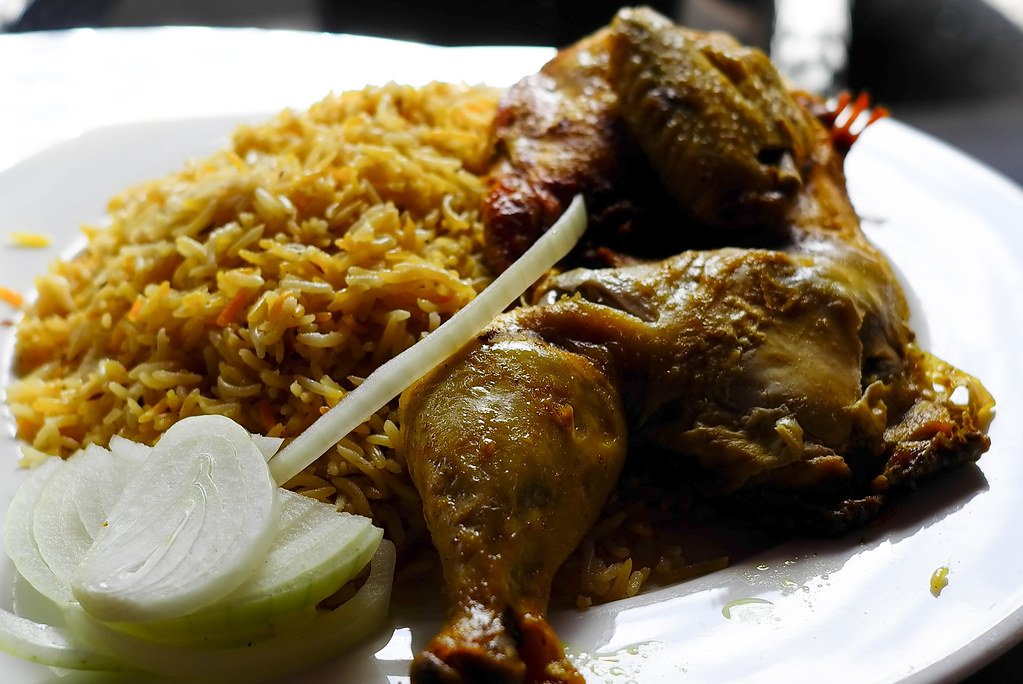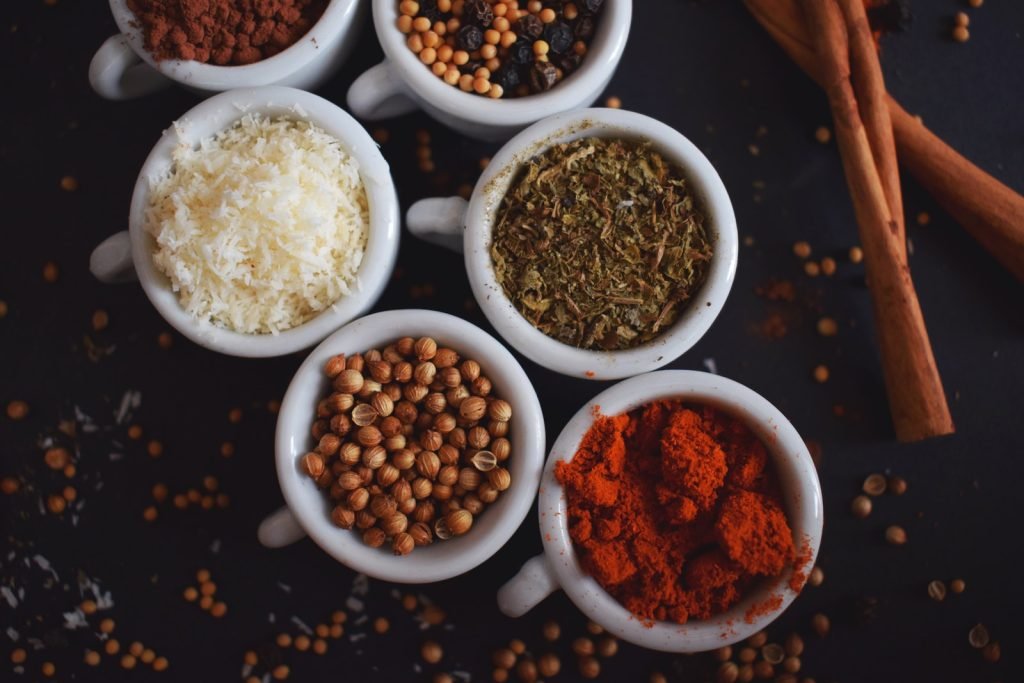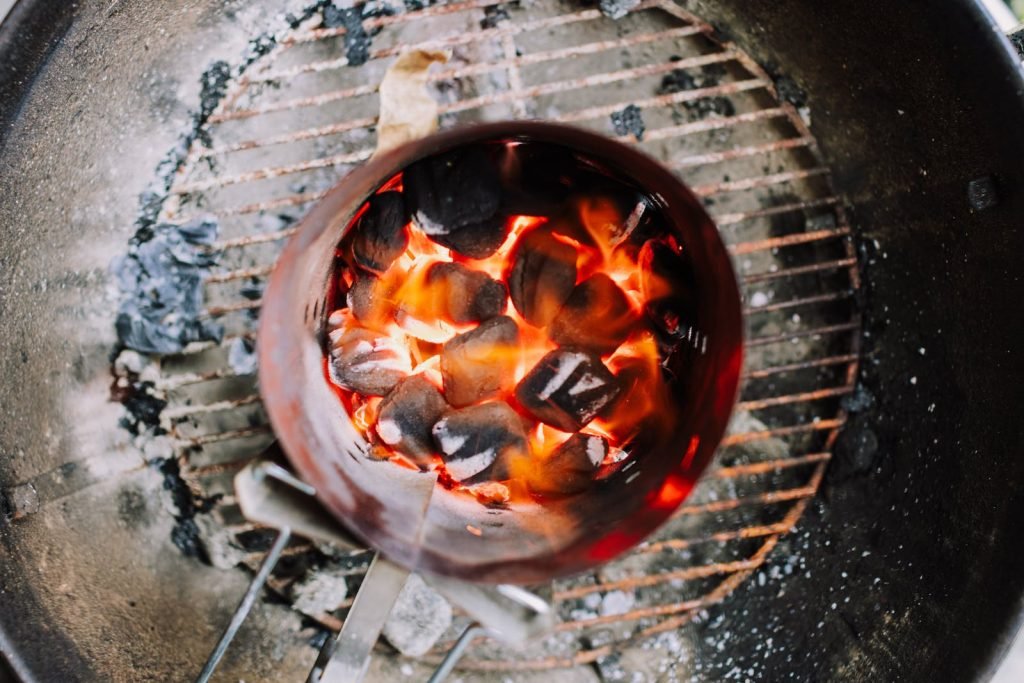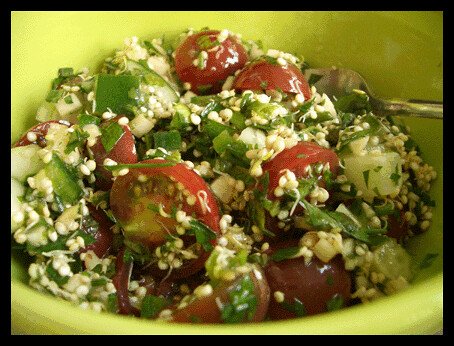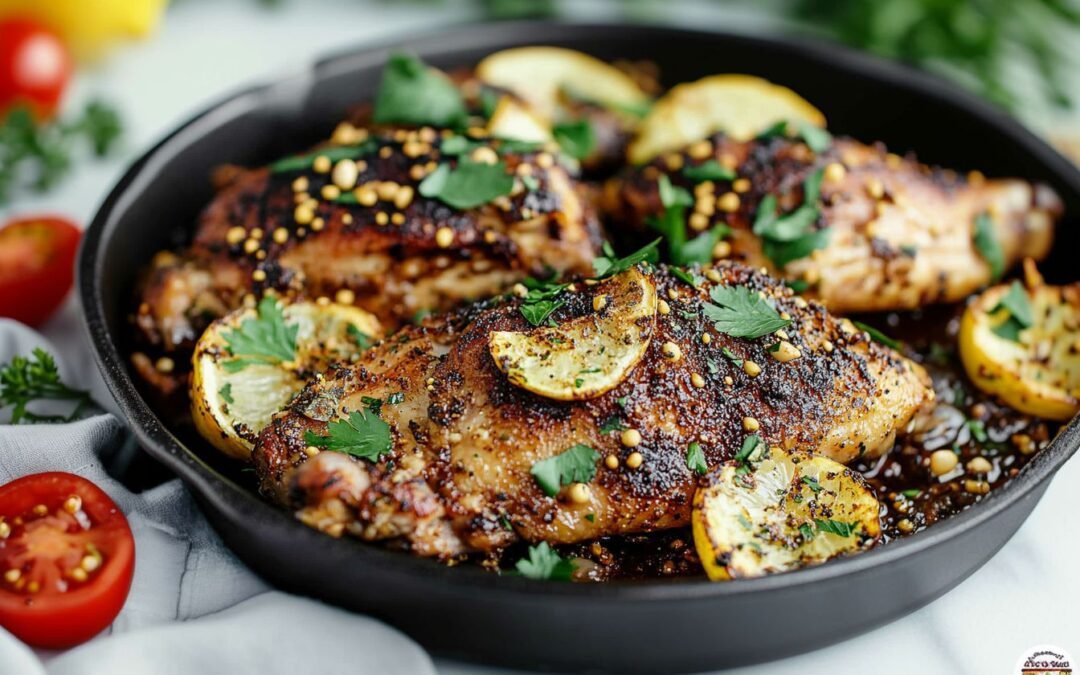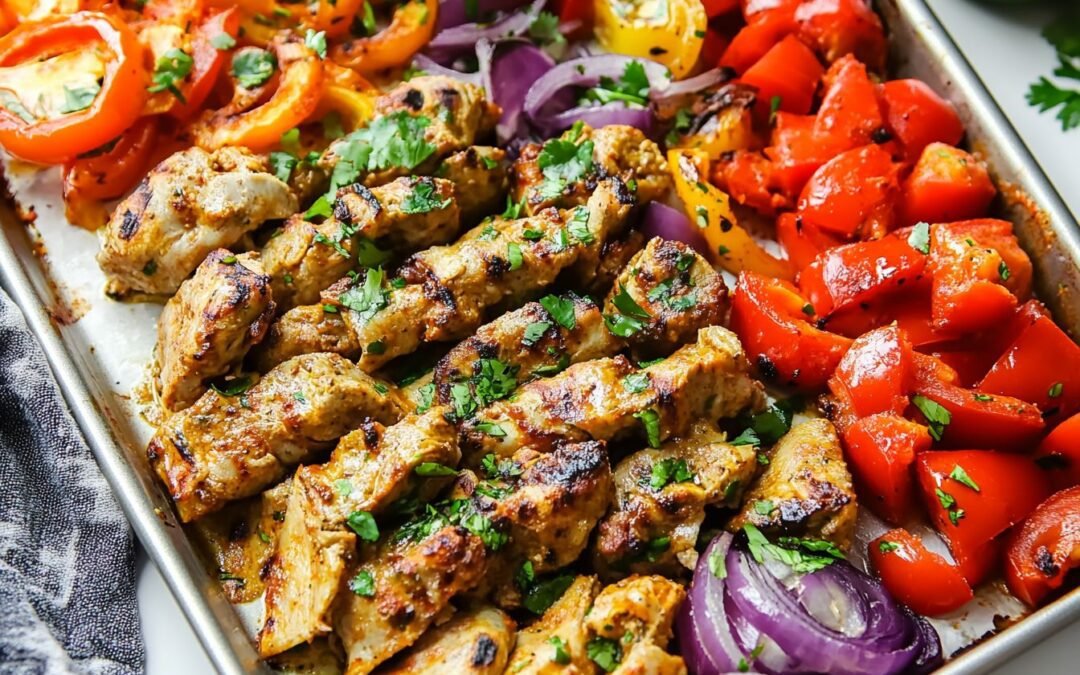I recently discovered a new favorite recipe – a chicken mandi recipe. This traditional Yemeni dish is a flavorful and aromatic meal that is perfect for any occasion. The dish consists of tender, juicy chicken that is marinated in a blend of spices and then cooked over charcoal until it is perfectly charred and smoky.
To make chicken mandi, you will need a variety of spices such as cumin, cardamom, black pepper, coriander, turmeric, ginger, and nutmeg. These spices are combined with olive oil, butter, and lime juice to create a delicious marinade that is used to coat the chicken. The chicken is then cooked over charcoal until it is perfectly cooked and infused with the smoky flavor of the charcoal.
The chicken mandi is traditionally served with fragrant and fluffy basmati rice that has been cooked with a variety of spices and aromatics such as onions, garlic, green chilies, and saffron. The result is a delicious and comforting meal that is perfect for any occasion.
History of Chicken Mandi
As a food lover, I have always been intrigued by the history of different dishes. Chicken Mandi is a popular Arabian dish that has a rich history and cultural significance. In this section, I will delve into the origins and cultural significance of Chicken Mandi.
Origins
Chicken Mandi, originating in Yemen, has become popular across the Middle East. “Mandi” comes from the Arabic word “nada,” meaning “dew.” This refers to the method of cooking the meat, which involves steaming it in a closed clay oven with charcoal and hot coals. The meat is cooked slowly, allowing the flavors to infuse and giving it a unique smoky taste.
Cultural Significance
Chicken Mandi is a dish that is often served on special occasions, such as weddings, Eid, and other celebrations. It is a symbol of hospitality and generosity, and it is often served to guests as a sign of respect and honor. In some cultures, it is also believed to have medicinal properties and is used to treat certain ailments.
Ingredients:
Mandi Spice Mix:
- 1 tbsp of ground cumin
- 1 tbsp of ground green cardamom (alternative – ground cardamom pods)
- ½ tbsp of ground black pepper (alternative – peppercorns)
- ½ tbsp of ground coriander
- 1 tsp of turmeric
- 1 tsp of ground ginger
- ½ tsp of ground nutmeg
Chicken Mandi Marinade:
- 2 tbsp of extra virgin olive oil (1st portion)
- 2 tbsp of melted butter (or ghee)
- 1 tbsp of lime juice
- 4 lb whole chicken
- 1 tbsp of Mandi spice mix (from above – 1st portion)
- Salt (optional, to taste)
Rice:
- 1 tbsp of extra virgin olive oil (2nd portion)
- 1 diced white (or yellow) onion
- 3-4 crushed garlic cloves
- 12 oz of diced green chiles
- 1 tbsp of garlic ginger paste
- 1 tsp of Mandi spice mix (from above – 2nd portion)
- 2 bay leaves
- 1 cinnamon stick
- 3 cups basmati rice (soaked for 20-30 minutes, then rinsed)
- ¼ tsp of saffron (2-3 strands + 1 tablespoon of warm water)
- 4 ½ cups chicken broth
Charcoal (to smoke):
- 1 charcoal (1 bbq briquette)
- Cooking oil
How to Make Chicken Mandi?
Preparing the mandi spice:
- Mix cumin, green cardamom, coriander, black pepper, ginger, turmeric, and nutmeg in a bowl for the mandi spice blend.
- If you have whole spices, toast them in a dry pan until they smell nice, then grind them into a fine powder with a spice grinder.
Making the Chicken Mandi Marinade:
- Mix olive oil, lime juice, melted butter, and a portion of the mandi spice blend in a small bowl.
- Then, coat the chicken pieces with the marinade thoroughly.
- Cover it, and refrigerate it for at least one hour or preferably overnight to allow the flavors to meld.
Preparing the chicken mandi:
- Heat your oven to 400 degrees F (205 degrees C) and cover a baking tray with parchment paper.
- Roast the marinated chicken for 40-45 minutes or until the inside reaches 180 degrees F (82 degrees C) on a meat thermometer. Then, take it out of the oven.
Cocking the rice:
- Warm olive oil in a big pan or Dutch oven over medium heat. Cook the diced onion until it smells nice and turns slightly see-through.
- Add crushed garlic cloves, diced green chiles, mandi spice blend, garlic ginger paste, bay leaves, and cinnamon stick, and saute for an additional 2-3 minutes.
- Next, add soaked and rinsed rice and fry it with the sauteed ingredients for 10 minutes.
- Add chicken broth, stir well, cover the pot with foil and the lid, and cook for 10-15 minutes until the rice is done.
- After the rice is done, use a fork to separate the grains.
The charcoal:
- Put a charcoal briquette on the gas stove and heat it until it turns red for about 5 minutes.
- Create a two-layered pouch or bowl using aluminum foil and lightly grease it with cooking oil. Put the hot coal into the foil pouch and carefully position it in the middle of the rice.
- Next, position the chicken on top of the rice and charcoal. Cover the pot with aluminum foil and put the lid on to seal it.
- Let the pot sit sealed for at least 10 minutes before opening it right before serving. Carve the chicken if necessary and serve it on the smoky rice.
Cooking Equipment
As with any recipe, the right equipment is essential for achieving the perfect result. When it comes to making chicken mandi, there are two main options for cooking equipment: the traditional mandi pit and modern kitchen alternatives.
Traditional Mandi Pit
The traditional way of making chicken mandi involves cooking the chicken in a deep hole in the ground, known as a mandi pit. The pit is typically lined with stones or bricks and filled with hot coals, which slowly cook the chicken to perfection.
While this method may sound daunting, it’s quite simple to set up. All you need is a large hole in the ground, some stones or bricks, and some hot coals. Once the pit is ready, simply place the marinated chicken on a wire rack and lower it into the pit. Cover the pit with a lid or some foil and let the chicken cook for several hours, until it’s tender and juicy.
Modern Kitchen Alternatives
If you don’t have access to a mandi pit, don’t worry! There are plenty of modern kitchen alternatives that can be used to make delicious chicken mandi. Some popular options include:
- Oven: Preheat your oven to 400°F (180°C) and place the marinated chicken in a baking dish. Cover the dish with foil and bake for 1-2 hours, until the chicken is cooked through.
- Slow cooker: Place the marinated chicken in a slow cooker and cook on low heat for 6-8 hours, until the chicken is tender and falling off the bone.
- Grill: Preheat your grill to medium-high heat and place the marinated chicken on the grill grates. Cook for 20-30 minutes, flipping occasionally, until the chicken is cooked through and has a nice char.
No matter which cooking equipment you choose, the key to making delicious chicken mandi is to marinate the chicken overnight and cook it low and slow until it’s tender and juicy. With a little bit of patience and the right equipment, you can create a mouthwatering dish that’s sure to impress your family and friends.
Serving Suggestions
As someone who loves to cook and share delicious food with others, I always like to think about how I can best present a dish. Here are some serving suggestions for your chicken mandi:
Accompaniments
While chicken mandi is a delicious and flavorful dish on its own, it can be enhanced with some tasty accompaniments. Here are a few ideas:
- Hummus: A creamy and tangy hummus is a great complement to the rich and savory flavors of this dish. Serve it on the side or drizzle it over the chicken for an extra burst of flavor.
- Tabbouleh: This fresh and zesty salad is a perfect pairing for the chicken mandi. The combination of parsley, mint, tomatoes, and lemon juice adds a bright and refreshing contrast to the dish.
- Flatbread: A warm and fluffy flatbread is the perfect vessel for scooping up the tender chicken and flavorful rice. Plus, it’s great for soaking up any extra sauce or juices.
Presentation Tips
When it comes to serving chicken mandi, presentation is key. Here are some tips to make your dish look as good as it tastes:
- Garnish: A sprinkle of fresh herbs, such as parsley or cilantro, adds a pop of color and freshness to the dish. You can also add some sliced lemons or limes for an extra burst of acidity.
- Layering: To create a visually appealing dish, try layering the chicken and rice in a large serving platter. This will allow your guests to see all the different components of the dish and make it easier for them to serve themselves.
- Serving Utensils: Make sure to have plenty of serving utensils on hand, such as tongs and spoons, to make it easy for your guests to serve themselves. You can also provide small bowls for any sauces or accompaniments.
By following these serving suggestions, you can elevate your chicken mandi from a simple weeknight meal to a restaurant-worthy dish that will impress your guests.
Variations of Chicken Mandi
As a popular dish across the Middle East, Chicken Mandi has numerous variations in different regions and cultures. Here are some of the most common variations:
Regional Twists
Yemeni Mandi
Yemeni Mandi (like this recipe) is known for its unique blend of spices, including cumin, coriander, cardamom, and cloves. The chicken is marinated in these spices and then slow-cooked in a tandoor oven, giving it a smoky flavor and tender texture.
Saudi Arabian Mandi
In Saudi Arabia, Mandi is often made with lamb instead of chicken. The meat is marinated in a blend of spices and then cooked in a special underground oven called a tannur. The result is a succulent and flavorful meat that is often served with rice and a spicy tomato sauce.
Omani Mandi
The Omani Mandi is similar to the Yemeni mandi but with a few key differences. The chicken is marinated in a blend of spices that includes turmeric and saffron, giving it a vibrant yellow color. The rice is also cooked with the same spices, giving it a rich and fragrant flavor.
Dietary Adaptations
Low-Carb Mandi
For those following a low-carb diet, Mandi can be adapted by replacing the rice with cauliflower rice. The chicken is still marinated in the same spices and cooked in the same way, but the rice is substituted with a healthier alternative.
Vegan Mandi
For a vegan version of Mandi, the chicken is replaced with a plant-based protein such as tofu or seitan. The same spices can be used to marinate the protein, and it can be cooked in the same way as traditional Mandi. The rice can also be substituted with a vegetable alternative such as cauliflower rice or quinoa.
In conclusion, Chicken Mandi is a versatile dish that can be adapted to suit different regional and dietary preferences. From Yemeni to Saudi Arabian to Omani variations, there are endless ways to enjoy this flavorful and aromatic dish.
Storage and Reheating
Storing Leftovers
When it comes to storing leftover chicken mandi, it’s important to do it properly to ensure that it stays fresh and safe to eat. I recommend transferring the leftover chicken and rice to an airtight container and refrigerating it within two hours of cooking. You can store it in the refrigerator for up to three days.
If you have a large amount of leftovers that you know you won’t be able to eat within three days, you can freeze them instead. Simply transfer the chicken and rice to a freezer-safe container and store it in the freezer for up to three months. When you’re set to eat, defrost it in the fridge overnight and warm it up using one of the methods listed below.
Best Reheating Practices
When it comes to reheating chicken mandi, there are a few different methods you can use. Here are my top recommendations:
- Oven: Heat your oven to 350°F. Place the chicken and rice in an oven-safe dish and cover it with foil. Bake for 20-25 minutes, or until heated through.
- Microwave: Place the chicken and rice in a microwave-safe dish and cover it with a damp paper towel. Microwave on high for 1-2 minutes, or until heated through.
- Stovetop: Heat a small amount of oil or butter in a pan over medium heat. Add the chicken and rice and stir occasionally until heated through.
No matter which method you choose, it’s important to make sure that the chicken and rice are heated to an internal temperature of 165°F to ensure that they are safe to eat. You can use a food thermometer to check the temperature.
Conclusion
I hope you enjoyed learning how to make this delicious chicken mandi recipe. It is a perfect dish for any occasion and is sure to impress your guests.
To recap, the key to a great chicken mandi is to marinate the chicken overnight and cook it slowly over a low flame. This ensures that the chicken is tender and full of flavor.
Remember to serve the chicken mandi with the traditional rice and salad. The rice is cooked with the same spices used in the chicken marinade, giving it a unique and delicious flavor.
If you are looking for a dish that is both tasty and easy to make, then chicken mandi is worth a try. It is a crowd-pleaser and is sure to become a family favorite.
So what are you waiting for? Get cooking and enjoy this amazing dish with your loved ones!
As already mentioned, a refreshing lentil tabbouleh salad is perfect to serve with this dish.
Get the recipe now (by clicking the image below):
Shop the ingredients on Amazon
